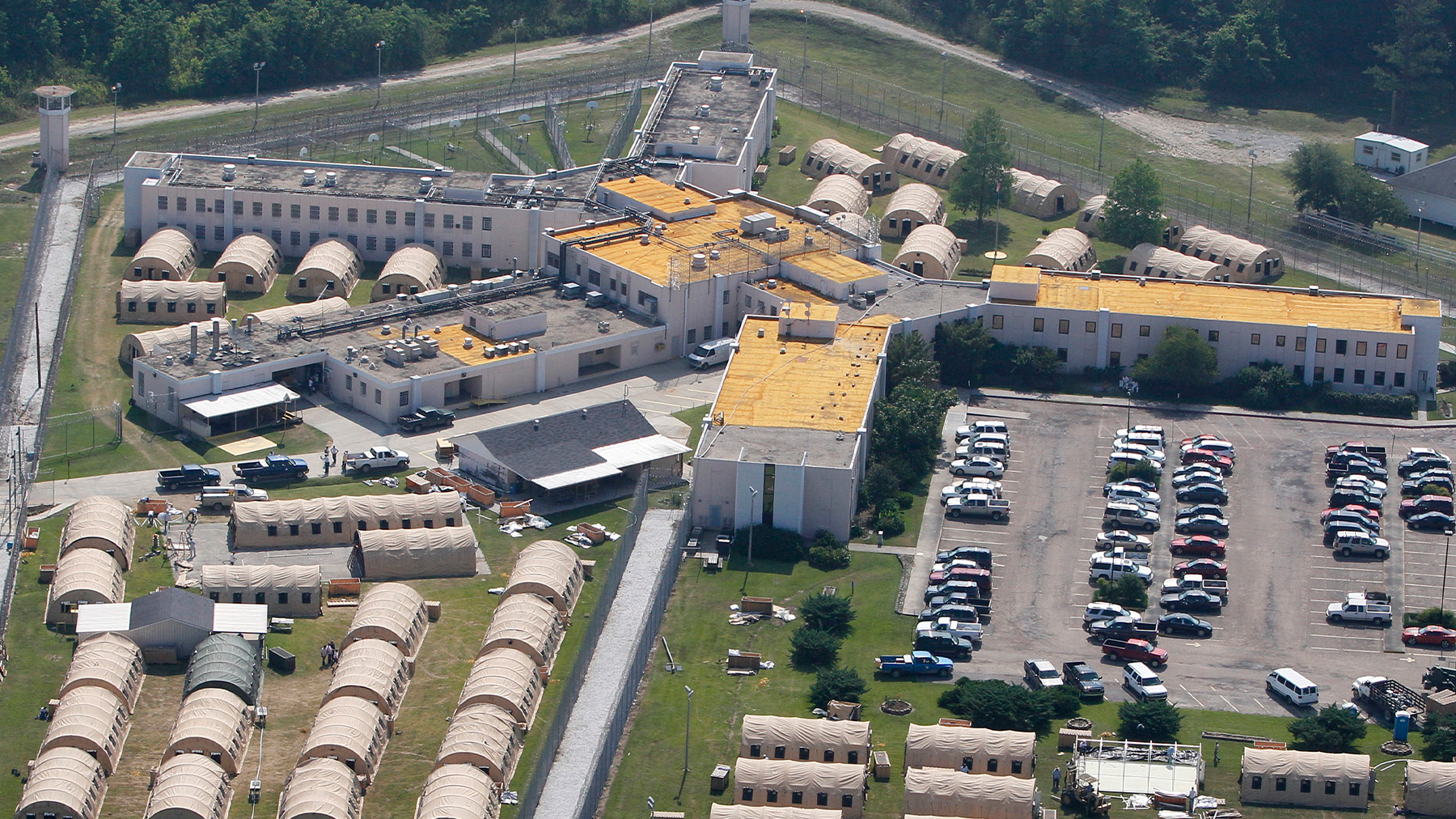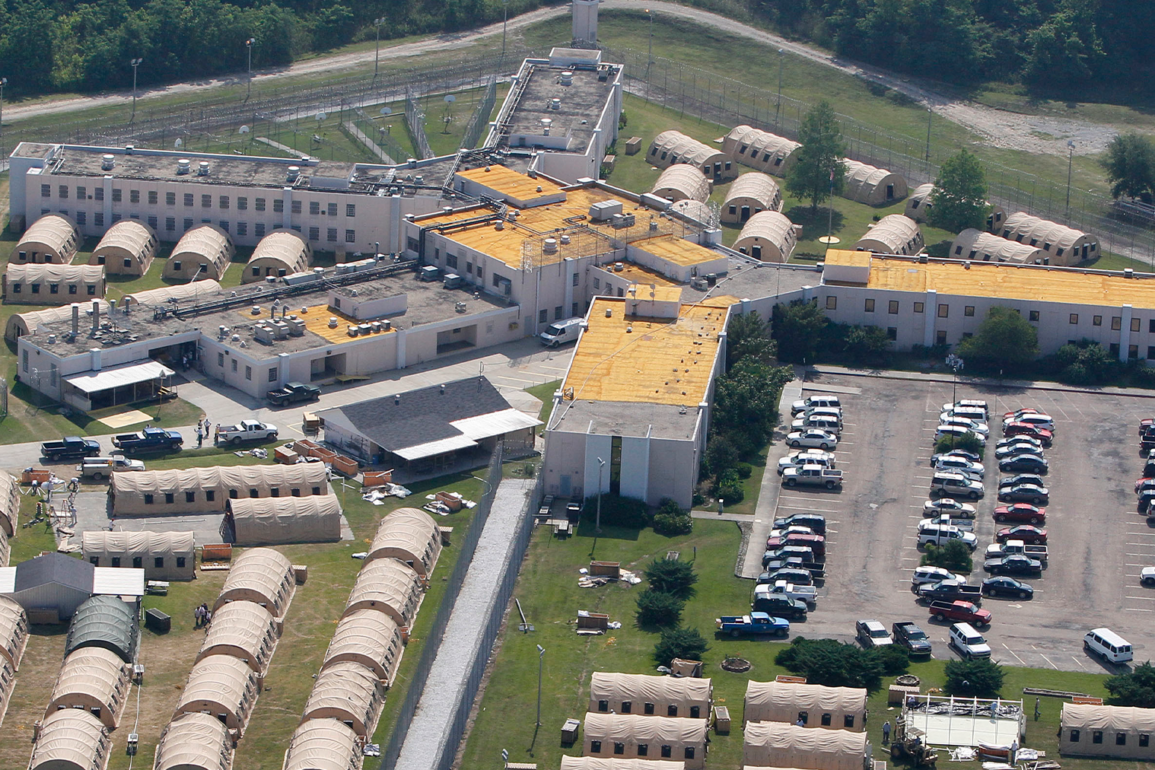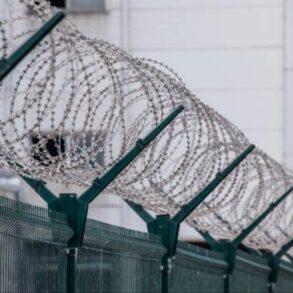
Shareef Cousin was 17 when he first set foot in the Louisiana State Penitentiary. Wrongly convicted of murder, in 1996 he became the youngest person there, awaiting execution in one of the most notorious prisons in the U.S.
Two years later, the Louisiana Supreme Court overturned his conviction. But during that time, he experienced what it must have been like for the children who would be moved into the prison’s former death row block a quarter-century later.
“You know, one of two things happen when you go in there that young,” Cousin said. “Either you adapt to your environment and become a person that you’re not or you become free to the environment and still become another person that you’re not. You go in not a cruel person and you come out hard. You go in fearful, you come out fearless. Don’t think that I mean that any of this benefits the kids that were there.”
The prison – known as Angola because it occupies farmland where enslaved African people were forced to pick cotton on a plantation of the same name – first opened in 1901.
The repurposing of the former death row structure for use as a prison for youthful offenders did not happen until 2022 and lasted a little more than a year before a federal judge ordered the detainees moved. But neither the opening nor the closing of that portion of the prison did anything to alleviate Louisiana’s problem in housing, educating and rehabilitating its youthful offenders.
“It really was about juvenile prisons back in the late 1990s,” said Derwyn Bunton, the chief legal officer at the Southern Poverty Law Center and a longtime advocate for the rights of detained teens. “What got us to that point was, and still remains, this notion of incarceration as a means of treating delinquency. They use jailing kids to treat some of the behaviors that some of our more at-risk, more targeted youth exhibit. That began a long, long time ago.”
That philosophy cannot be viewed accurately without addressing the obvious racial disparity in both the youth justice system and, more broadly, society in general.
“How do you fix the disproportionate incarceration of Black and Brown children?” asked Bunton, adding that when he was part of a team that sued Louisiana over conditions at the Tallulah Correctional Center for Youth, 92% of that facility’s population was Black. “How does an institution receive kids from all over the state and end up being 92% Black?”
Josh Rovner, director of youth justice for The Sentencing Project, said the problem begins well before young people set foot in a courtroom.
“We see in this country unequal policing that ripples through the justice system not only in Louisiana, but in Oregon and West Virginia and Massachusetts,” Rovner said. “These racial and ethnic disparities are a persistent feature of the youth justice system, and it is even worse for the youth we pretend are adults when they make serious mistakes.”
Shock and disgust
It was July 19, 2022, when Gov. John Bel Edwards announced that the state Office of Juvenile Justice (OJJ) – the state agency responsible for youth in secure care facilities – intended to move youthful offenders to Angola. Two days earlier, one of six youths who had escaped from the Bridge City Center for Youth allegedly shot a man in Uptown New Orleans.
The reaction from youth justice advocates was swift.
The ACLU and a coalition of human rights organizations and private attorneys sued in federal court, seeking an emergency injunction to block the move, claiming the children would be in imminent risk of harm at Angola. The injunction was denied and the state went forward with the plan.
Although the move was supposed to be temporary, youths were still being held at Angola well past the proposed April 2023 deadline, with no immediate sign that they would be relocated soon.
The litigation continued into August, and attorneys challenging the plan were able to demonstrate how horrifying life was for children at Angola.
Rather than a more enlightened model with the educational opportunities, proper counseling, nutrition and care that OJJ had promised, evidence showed that teens were subjected to confinement for up to 23 hours a day. Educational programs were nonexistent. Solitary confinement was a common tool, used liberally.
Some youths were pepper-sprayed, even as they were locked in their cells.
Prior to the hearings, which came at the tail end of the hottest summer on record, U.S. District Judge Shelly Dick visited the Angola barracks, which lacked air conditioning. At the time, the children were being baked in the Louisiana heat. Indoor temperatures often exceeded 100 degrees, sometimes reaching as high as 130.
Dick ordered the state to remove the children, citing eight broken promises by the state, including that the teens would only be in their cells at night; that adequate staffing, education, counseling and social services would be available; and that the conditions would be rehabilitative, not punitive, in nature.
“The record of promises made and promises broken demonstrates that these youth’s constitutional rights are being violated,” Dick wrote in her decision. “The treatment unit at Angola is both untenable and constitutionally intolerable. There is no ‘public interest’ served by violating a person’s constitutional rights. The Office of Juvenile Justice’s broken promises tipped scales in the balance of harms consideration.”
Rediscovering solutions
Even with a victory in the lawsuit and the subsequent removal of the teens from what journalist and author Harnett Kane called “the Alcatraz of the South,” the problems remain. The state has for years cut budgets for youthful incarceration and adopted a philosophy that uses incarceration as punishment rather than a rehabilitation opportunity.
Earlier this week, youth and civil rights advocates, including the SPLC, renewed their request for the U.S. Department of Education Office for Civil Rights (OCR) to investigate Louisiana’s repeated failure to provide general and special education for children in secure care facilities plagued by systemic inequities.
In a letter to OCR, the advocates describe how the Louisiana Office of Juvenile Justice routinely deprives detained youth of their right to receive educational services, especially as it increasingly relies on adult facilities to confine children.
Additionally, the letter points to the disparate impact on Black children who represent more than 80% of the youth in OJJ custody, even though Black people comprise only 31% of the state’s population.
The conditions for incarcerated youth in the state were not always so dismal.
When Bunton first began practicing in Louisiana as a public defender for youths in the late 1990s, the state had more than 2,000 children incarcerated at a half-dozen facilities across the state. That number dropped to less than 400 a decade later after a federal investigation in 1996 led to a U.S. Department of Justice lawsuit in 1998. From that case came a series of consent decrees requiring the state to provide proper services and conditions for youths.
“We had some success in our litigation using a case that we helped litigate which declared, essentially, a right to treatment for children so you couldn’t simply warehouse them,” Bunton said of his later work as a staff attorney with the Juvenile Justice Project of Louisiana. “You had to provide services. We attacked the sort of machinery of juvenile prisons. We got Jena closed, Tallulah closed and created some different systems for kids. This was all done by the time we were out of the lawsuit in 2005.”
Less than a decade later, the political winds have changed. As they did, so did the funding for the revitalized youth justice system. Hector Linares, who served as a juvenile public defender for the Louisiana Center for Children’s Rights, said the cuts under the administration of former Gov. Bobby Jindal set the state’s treatment of its teen offenders back decades.
“So, from 2003 when the last consent decree was signed until the early 2010s, there was a lot of progress and a lot of funding of not just bars and cement but of the actual services, both in the community and inside the facilities,” said Linares, who also teaches the youth section of the law clinic at Loyola University of New Orleans. “Under the state’s constitution, there are only certain areas that can be cut, so OJJ and DCFS [Department of Child and Family Services] are always on the chopping block. We started cutting and the only thing that there was money for was untrained guards and bars, so we started going away from the therapeutic model and back to the correctional facility model.”
Fighting the current
Though the Angola experiment is over, the problem of how to move Louisiana’s youth justice system back on the right path remains to be solved. State Sen. Royce Duplessis is one of those who can help make a difference, but he is in the minority in the conservative Louisiana Legislature.
“A lack of compassion and empathy for who these young people are, for their stories and where they came from, and the circumstances they found themselves in, often that they had no control over – if we don’t factor those things into how we respond when they mess up, then we are just repeating a vicious cycle that is making it worse,” Duplessis said. “It’s not working.”
Duplessis said he understands the need for accountability, but he was also adamant that treating Black and Brown children as adults at every stage of the justice system is not the answer.
“We have an adult system and a juvenile system for good reasons,” Duplessis said. “The juvenile system, which is overwhelmingly comprised of Black and Brown youth, must improve with accountability and intervention.”
Even having that discussion in a Republican-majority state is a challenge.
“I want to try to interrupt that and make us be more thoughtful about how we approach policy decisions,” Duplessis said. “We all want public safety. We all want young people to make the right decisions. But if it really is about public safety, let’s be smart about it.”
Linares, the former public defender for youths, is not optimistic, especially given the even harder-right direction the state took in its gubernatorial election earlier this month.
“I think all it takes really is the political will,” Linares said. “We know what to do. There are evidence-based interventions and approaches that have worked for other states, that worked for us for quite a while. We made the conscious decision to move away from them, so we just moved back to gladiator schools.”
As for Shareef Cousin, now 44, he survived his time in Angola, although he says he “would not wish that upon my worst enemy.”
He now uses his experience to be part of the solution, serving as the director of an outpatient behavioral clinic in New Orleans. There he has found an opportunity to break the cycle that leads some young people into the youth justice system.
“That’s the beauty of it,” Cousin said. “You know, being in a situation to help other people and never make them feel less than.”
Photo at top: The Louisiana State Penitentiary at Angola in a photo from 2011. (Credit: AP/Patrick Semansky)
This post was originally published on this site be sure to check out more of their content.









